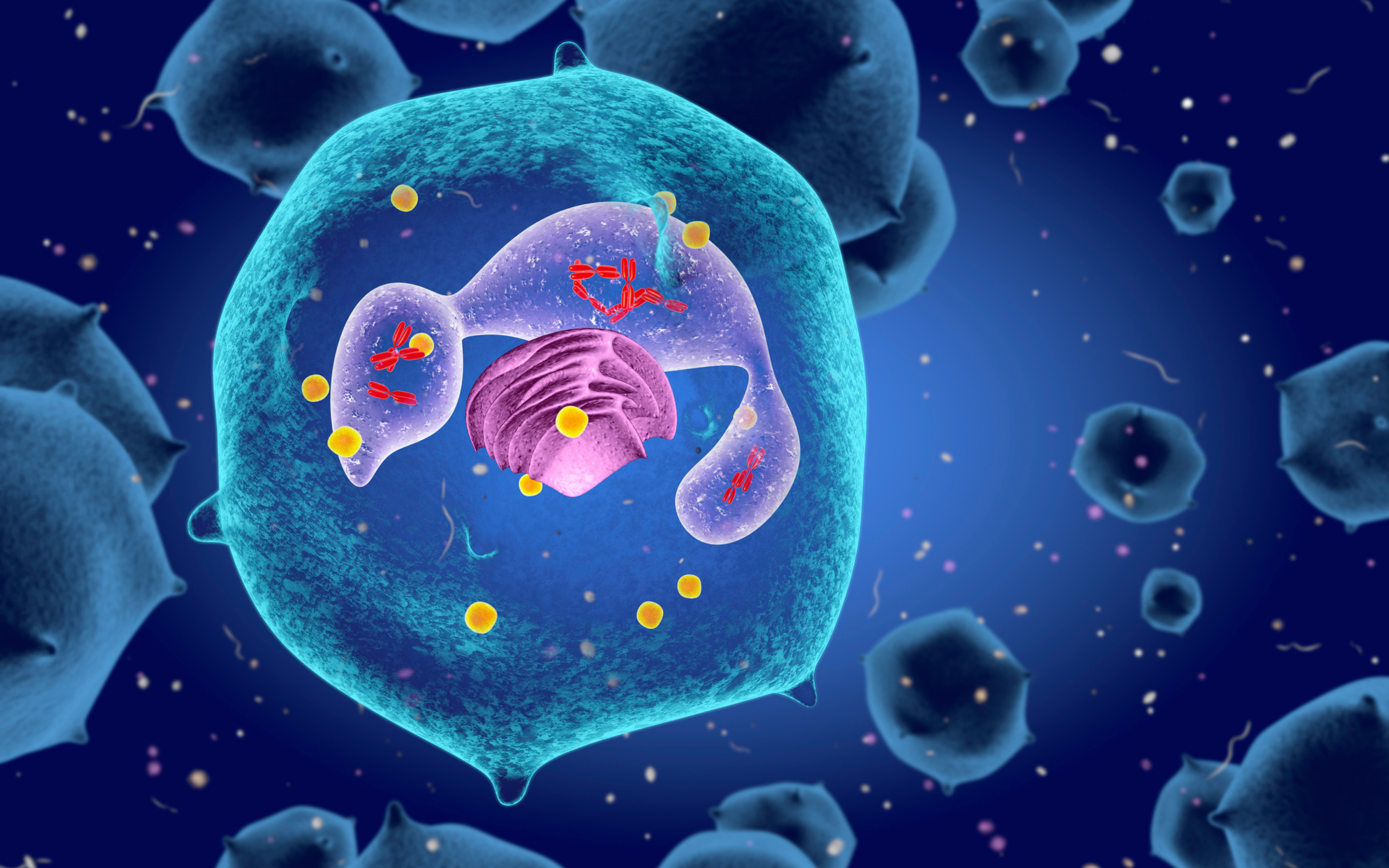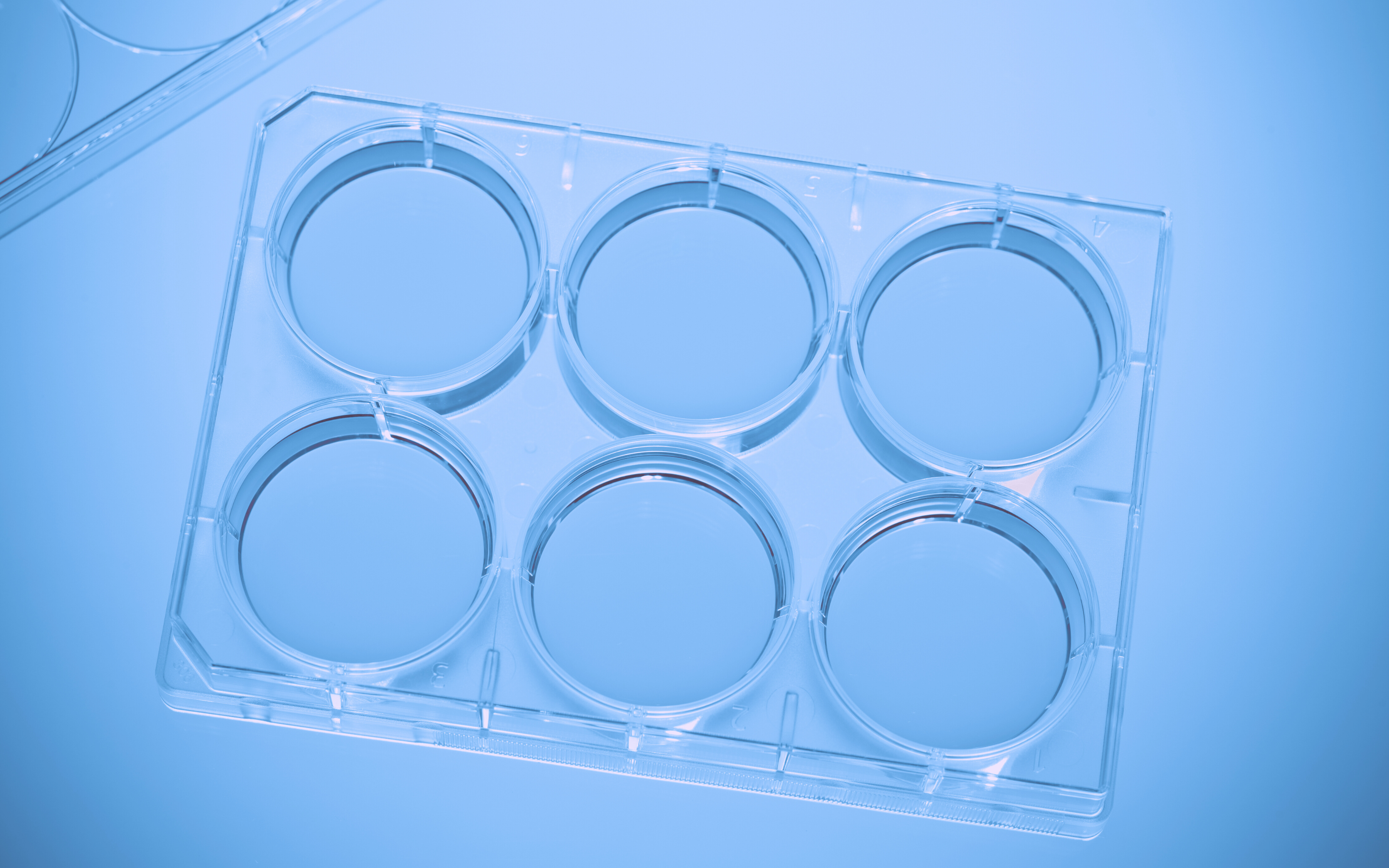We interviewed Keren Gueta Milshtein, research and development manager at MyPlant Bio.
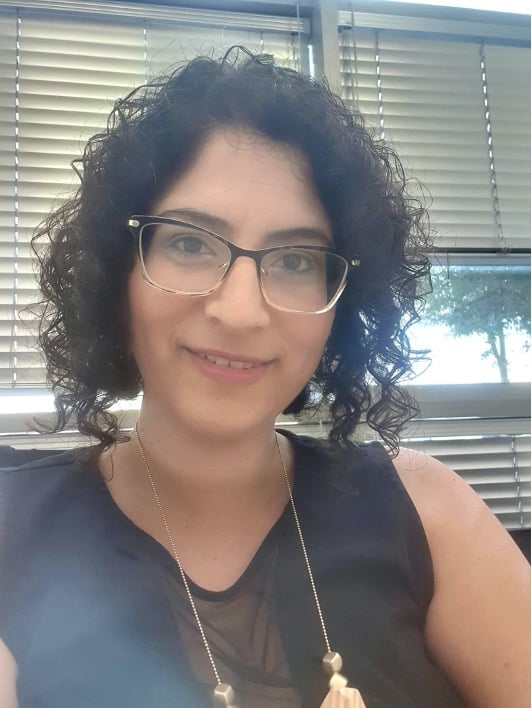
Tell us a bit about MyPlant Bio.
MyPlant Bio was founded by Professor David (Dedi) Meiri and Dr. Shmuel (Muli) Mandel to discover the full biological potential of cannabis and other plant species. We have developed a library of cell-based models onto which we screen the plant extracts to test their effects. These model systems mimic the aspects of different diseases, and the biological effects are measured by different biological assays (such as apoptosis for cancer, cytokines for inflammation, collagen discharge from connective tissues, etc.). We are researching a wide range of applications, and this is part of what makes MyPlant Bio special — we are multidisciplinary, which allows us to answer many different biological questions.
Our cell cultures are of human origin, and some even originate in human donors (according to regulations, of course), which allows us to study human diseases as accurately as possible.
MyPlant Bio is a subsidiary company of CannaSoul Analytics, which has cutting-edge chemistry abilities. It provides us with powerful and unique identifying tools for cannabinoids, terpenes, and even components of the endocannabinoid system — a blood or saliva sample can be tested for over 100 endocannabinoids that our body produces, such as 2AG and AEA. When we discover a promising extract in one of our model systems, we can use these chemical tools to identify its components down to the level of a compound group or a single compound and test it again on our systems. Deriving insights from these tests allows us to decide which direction we want to pursue and invest in.
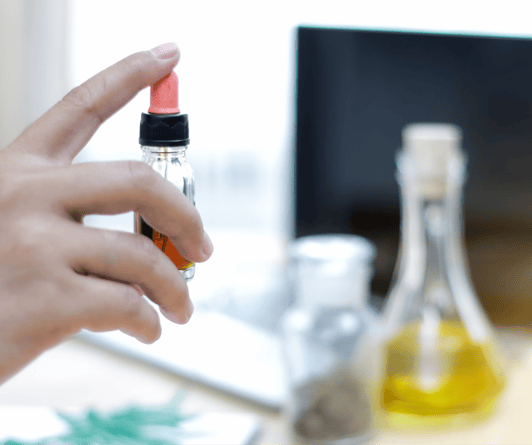
"A blood or saliva sample can be tested for over 100 endocannabinoids that our body produces, such as 2AG and AEA."
Which diseases are you currently researching?
We have over 15 running models, covering a wide range of aspects: bacterial and viral inflammations, skin inflammations and wound healing, scarring in skin, diseases related to intestinal inflammation, and more.
You mentioned intestinal inflammation; my daughter was the youngest Crohn's disease patient in the country two years ago, at 11 months old. I asked the doctor about using cannabis, but he was very against it because of her age.
Cannabis has an unjustly bad reputation. People think of it as a drug — which to some extent it can be — but not when used in a careful and controlled way.
Currently, cannabis is mostly prescribed as a painkiller, but in MyPlant Bio we understand that it can have much wider applications. We can identify more than 30 receptors across systems that bind various cannabinoids. Additionally, different strains of cannabis contain different combinations and amounts of cannabinoids and can function as different kinds of medicine. For example, a specific strain can kill colon cancer cells, but have no effect on prostate cancer, while another one has the opposite effect. And yet, all over the world medical cannabis is prescribed without specifying the type of cannabis needed, and without understanding what are the active compounds that cause the desired effect. It is a much more complex world than what most people think, and a lot is remaining to discover about it.
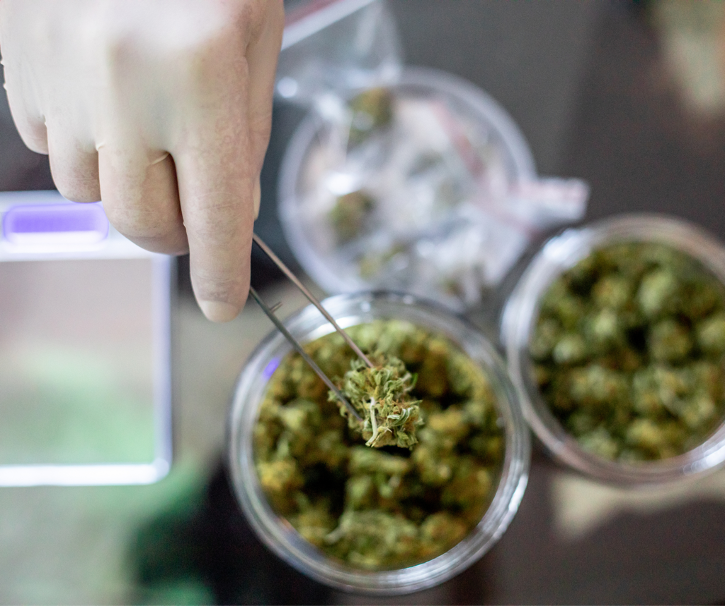
"It is a much more complex world than what most people think, and a lot is remaining to discover about it."
How many people are there in MyPlant Bio, and in which locations?
MyPlant Bio is an Israeli company located in Caesarea. We have plans to expand to Europe and North America, but our center of development will always remain in Israel. We are a small company of 10 people.
CannaSoul is three years old, and MyPlant Bio is one and a half years old.
So you’re a pretty new company, and you’ve been operating under COVID-19 restrictions for most of your existence. That must have been challenging.
That’s right. Thankfully, we were permitted to continue working because we are in the field of biology and we also worked on covid-related treatments (you can read about our collaboration project with Eybna here). Still, we had to work in shifts and separate our workforce into smaller teams I must admit that Labguru was a huge help. Every model system had two people working on it, one from each shift, so we used the “shared experiment” feature to make sure that they updated each other on their actions and findings. We also used Labroom, Labguru’s video call feature, and the Labguru chat to have communications tied together with the rest of our research. Personally, as administrator, I could keep track of what everyone was up to even from home, and could easily create a report of accomplished tasks and then assign tasks to the researchers to point us in the right direction.
During a time when other laboratories had to pause their research work, we pushed forward — and without a good research software it would’ve been much harder.
Do you still use the “shared experiment” feature?
Yes, when two or more people work on the same project, one person creates the experiment and gives editing permission to the other. It significantly improves our teamwork. There’s no need for double work of recording, so it also saves time.
How many of you use Labguru?
We have 5 people working in the lab, so 50% of the company uses Labguru. I am also the administrator of the system in the company.
When did you start using Labguru?
We’ve been using Labguru since we started out. We decided that we must do it the right way from the get-go to prevent information loss and make sure everything is organized. As someone who has worked in other companies where they didn’t implement a research lab management software, I understood the importance of it. When you work with paper lab notebooks it’s a difficult task to find anything in your records.
When you start regulation processes and have to provide raw data, sometimes you have to go ten years back and search through the records of someone who is no longer in the company. People often take notes in a way that is completely incomprehensible to anyone else, and you have to somehow decipher it and extract useful information. It’s Sisyphean and sometimes impossible work. In Labguru all your data is organized in a uniform and searchable manner.
That’s why I told our lab members that while we might have to work a little harder during the onboarding of Labguru, later on we would be grateful that we did so.
Do you feel like this choice paid off?
Yes. We don’t write anything on paper. All of our protocols and experiments are on Labguru, and we use the form element to create reproducible templates for experiments. We make some of the fields mandatory so that there is a consistent format for our data-keeping, for example, the lot number of the material used and the passage number of the cells. This makes sure all of our information will be easily searchable and structured. All inventory (reagents, cell stocks, equipment etc.) logged and traced.
What made you choose Labguru?
We did our homework and went over many different lab management systems when selecting the software for our lab. We knew that we couldn’t settle for a strict LIMS software — we needed something flexible that would be adaptable to our diverse experiments and could be customized to our needs. When you’re in R&D, you need an open system.
On the other hand, we didn’t want a system that was too loose. We didn’t want to build our organization system and settings from scratch, so we searched for a system where someone has already laid out the foundations for you.
Labguru was an option that contained all the aspects of research lab management that we needed (inventory and storage, as well as ELN). It seemed to have the correct structure, while still being flexible enough to allow for complex and dynamic research. We got the impression that Labguru’s interface and the connections within it were built by people who understand biology. It all looked very intuitive, very accurate, with the option to add our necessary fields, create customized forms, and add our own special reagents.
Additionally, the price was within our budget as a new startup company. We got not only the product itself, but also full support, and the ability to back up data as often as many times as we needed. With other products, you need to pay every time you need a backup or find your own cloud space to save your data. Labguru’s offer was the most fitting solution for us — when you work in R&D you can’t afford to lose any information.
Speaking about support — are you satisfied with the support you received?
Yes. The Labguru support is incredible, we are enjoying our communications so much. It’s one of the most important factors, in my opinion — knowing that there’s a person on the other side who cares about helping us and listening to our needs. Your support team — Ilya, Zohar, Meirav — became family members here during the integration process.
Do you use the Labguru inventory and sample management features?
Yes. We have more than 30 cell lines in our lab, and each one of them mimics a different aspect of the human body. For each of these lines, we need to record properties such as origin, relationships, experiments used in, receptor profile, and so on. There’s also complex information to be recorded about the cells themselves, and about the reagents we use: for example, a single reagent can be an inducer in one system and an inhibitor in another. It’s a lot of information to follow, and if you don’t have it in an organized and comprehensive database, you’ll be completely lost.
In some laboratories, this sort of information is sorted using excel datasheets. But our research demands higher standards. Labguru helps us store this information in a useful and secure way.
Additionally, we have to keep track of stocks: reagent expiration dates, amounts remaining in stock, shopping lists, locations, and more. Even in a small laboratory, things can easily get lost. If an order arrives and someone just carelessly places it in a random fridge, it’s unlikely that others will be able to find it later. That sort of thing is out of the question in MyPlant Bio. We are strict about using proper research lab management procedures. When you receive an order, use up a supply or move it, you immediately Indicate it in Labguru. If, for example, you take a bottle of 10 milliliters and separate it into 10 vials — whenever you use up one, you mark it as consumed in Labguru. This way, when we get down to the last 5 vials, we’ll know to make another order and not wait until the last minute and be left without a crucial supply. When returning items after use, everything goes to the location it was assigned within the system, and this way everything flows seamlessly with no errors, duplicates, or losses.

"Labguru has the correct structure, while still being flexible enough to allow for complex and dynamic research."
I understand that you have to work under two sets of regulations — the regular GLP guidelines for pharmaceutical research, as well as the regulations for companies working with cannabis. How do you deal with that?
We indeed operate under the QA regulations in addition to cannabis regulations. In both cases your lab work requires well documented working procedures.
Labguru has two important things that help with this process, which many other competitors didn’t. The first one is signing and witnessing experiments: the person who conducted the experiment signs it first, then passes it on to the administrator (in this case, me) for witnessing (second signature). After the witnessing, the experiment is locked and can’t be edited anymore. It’s like the procedure of signing a page in a paper notebook, only in a higher level of validity and compliance, since it’s electronic and the software makes sure nobody edits the entry after signing.§
The second thing is a full audit trail. Every action that takes place in the system is recorded, as the regulation requires. If anyone tries to edit an experiment with accidentally or malicious intent , we can always see it. Labguru makes sure for us that nothing will go wrong in the worst case.
How does Labguru help you personally with research lab management, as a development manager?
The biggest challenge for me in becoming a manager, as someone who used to do hands-on research on the bench, is to trust others to be as dedicated and careful in their work as I would’ve been. When you read what someone else did in order to monitor their work, the record needs to ensure you that they did a good job. Researchers here work on several projects at the same time. In a paper lab notebook, that means recording in retro, after finishing an experiment. With Labguru, they record everything live, during the process, so that every stage is recorded. This makes sure no data is lost, and as a manager, this puts me at ease. This is life-changing for me.
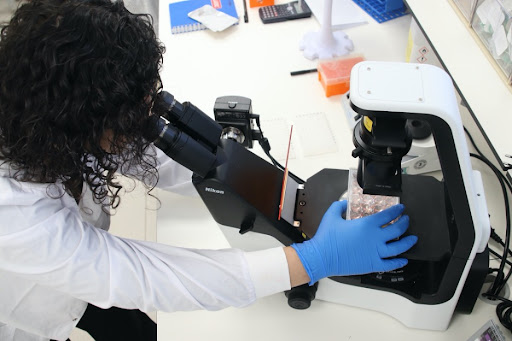
"Labguru makes sure no data is lost, and as a manager, this puts me at ease."
Can you describe the ROI you receive from Labguru?
Labguru prevents information loss and saves time and effort. In other companies, there’s an entire team dedicated to investigating errors in batches and tracing back its history. When using Labguru, you have an easily searchable history that can be used to pull out data on any specific batch or experiment. There’s also the time we would otherwise spend on manually recording data, organizing records and managing inventory.
The money-saving is hard to measure but is impossible to miss. When you don’t keep a tidy inventory and don’t pay attention to correct research lab management, you can easily buy the same supplies twice, or use an expired reagent in an experiment and ruin it. A single mistake like this can cost you months of work, which means a lot of money. Thanks to Labguru, this kind of thing doesn’t happen to us.
I’d say that all in all, Labguru saves us about 20% of our working time.
Anything else?
We believe that our research can offer supportive care and relief, significantly improve the quality of life of the patient, and even reduce the necessary amounts of prescribed medications. Stay tuned to hear about our discoveries.
Curious how Labguru can support your research like it does for MyPlant Bio? Schedule a demo or reach out to learn more.
%20(7).png?height=380&name=NEW%20Featured%20images%20%20-%20Blog%20(1200%20%C3%97%20750%20px)%20(7).png)

%20(4).png)
